Whether you’re renting an apartment in Manhattan, NY, or a townhouse in townhouse in San Francisco, CA, sometimes you’ll need to put up with less-than-perfect aesthetics and do your best with creative decor to make your home feel cozy. However, one thing that is hard to overlook or decorate around is terrible flooring. Whether it’s worn-out or scratched hardwood, chipped or cracked tile, dirty or damaged carpeting, or cut or dented linoleum, if the flooring looks terrible, your attitude toward the apartment will more than likely be unfavorable.
There are, however, a few temporary flooring options for you to consider as a renter. These temporary flooring ideas won’t cause any damage to existing flooring that would violate your lease or give the landlord any reason to withhold your security deposit. They also don’t involve convincing your landlord to spend money to replace the flooring. Once installed, these temporary solutions will make you feel pride in your rented home. Keep reading to learn more about temporary flooring and what options are available to you.
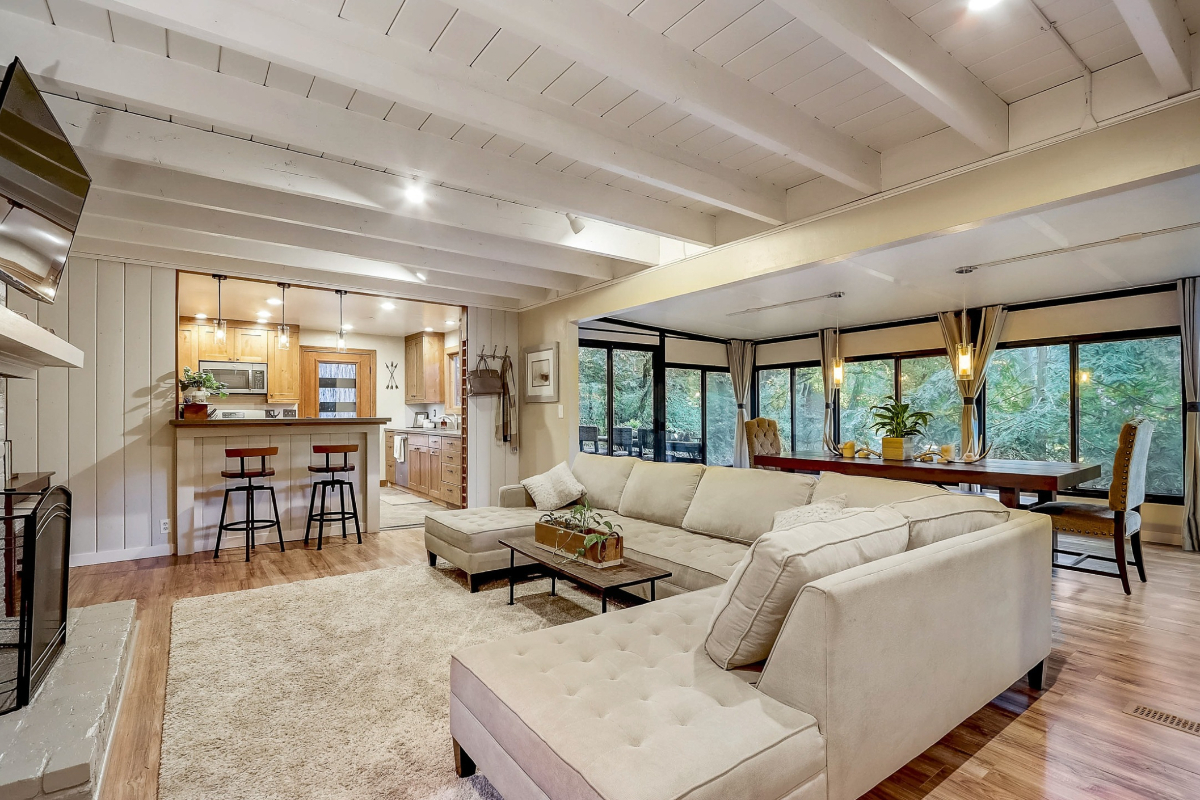
What is temporary flooring?
Temporary flooring is any solution temporarily laid over existing floor surfaces, such as tile, hardwood, or carpet. You can easily remove temporary flooring as it’s not permanently affixed to the flooring underneath. Temporary flooring solutions don’t need professional installation and often come with easy DIY instructions or videos.
7 types of temporary flooring options for renters
1. Stick-on vinyl floor decals
Stick-on vinyl floor decals, also known as peel-and-stick tiles, are vinyl tiles with an adhesive backing that makes them safe to put on top of hard surfaces. The adhesive is strong but not permanent, enough to hold the tiles in place but safe enough not to damage the flooring underneath. Stick-on vinyl floor decals are easy to install – you simply remove the backing from the tile and stick it firmly onto the carpet. Stick-on vinyl floor decals have a smooth texture and are easy to clean. You can use vinyl decals as an area rug or to cover the whole floor.
If you move into a rental with areas where the flooring is damaged, or you want to create different zones for the kitchen, dining room, and living area, stick-on vinyl floor decals could be an ideal solution. It’s available in various patterns and colors that allow you to upgrade the overall look and differentiate the space.
Budget-friendly stick-on vinyl floor decals are not intended to last forever. If decals start to look worn, that’s okay because you can remove and replace them at any time.
2. Carpet tiles
Carpet tiles involve a similar concept to vinyl decals; this option works best when laid over more rigid flooring such as concrete, tile, or hardwood. Carpet tiles can add warmth to an otherwise cold room. Carpet tile adhesive has also improved over time and now stays in place without damaging the underlying flooring. This temporary flooring option comes in low and high pile versions and various colors and patterns. If you damage or stain a tile, you can quickly and easily remove and replace it.
Carpet tiles are great if you want to cover a small area, such as a walkway or entryway. You can also use them as area rugs. Like vinyl tiles, you can use carpet tiles to resurface an entire room or make specific areas to designate space and functions, like a tan in the living room but a darker brown mix in the kitchen to cover up stains.
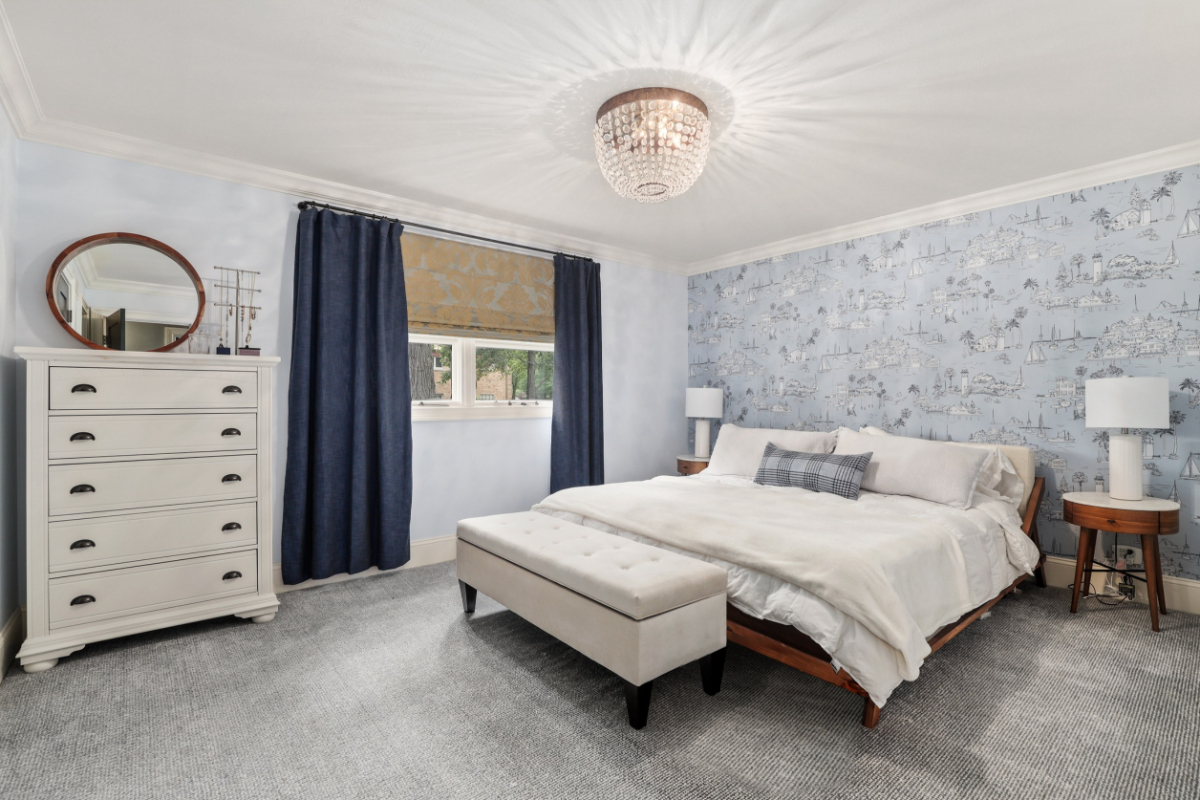
3. Click-in faux wood flooring
Click-in faux wood flooring is waterproof, scratch resistant, and can be easily installed. The two most common types are vinyl and laminate planks. Click-in faux wood laminate planks have a tongue-and-groove design that locks together without needing staples or glue. The core is made from wood byproducts and resin covered by a laminate layer. This layer features a design that usually makes the planks look like natural wood.
Click-in faux wood vinyl planks are made from fiberglass and vinyl, with a printed top layer that resembles wood. There are many design types of faux wood vinyl planks, from oak to hickory.
Both types of click-in faux wood flooring have natural designs and prints and come in various colors from tan to gray, light and dark brown, and black.
4. Area rugs
The easiest temporary flooring option for renters is an area rug. An area rug allows you to add personality and color or patterns to an otherwise dull space. Area rugs come in various styles, sizes, colors, and patterns. You can use them in any room or hallway. Buying area rugs is a budget-friendly option to transform any rental property.
Because you own the rugs and they are portable, you can take them with you when you move. In the meantime, they help you create a look you love and protect the existing flooring from further damage. If you choose area rugs as your temporary flooring solution, be sure to invest in a high-quality, non-slip rug pad.
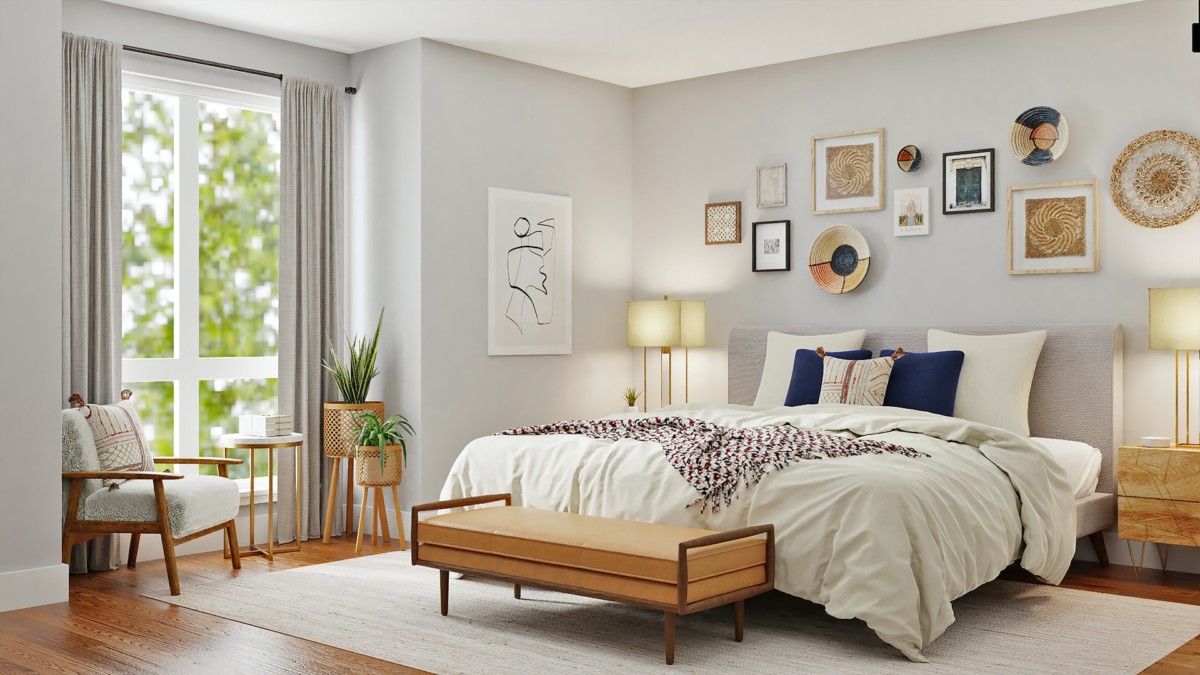
5. Foam floor tiles
Foam tiles have long been a popular solution for people who want to transform a room into a gym or yoga studio. However, foam tiles come in more than a gym mat look, allowing you to add colors and patterns to any room. Foam tiles interlock so they will stay in place without adhesive. They can be used over hard or soft floors and in areas that have both low and high foot traffic. Placed under furniture, they can prevent further floor damage. Foam tiles are waterproof and dent-proof, but sharp objects or a pet’s claws can puncture them.
6. Composite decking
Your apartment may have a patio or deck with broken boards, peeling paint, or cracked cement. In a case like this, you can use composite decking over the top of the old, worn-out material giving your patio a brand new look and feel. Composite decking now comes in an interlocking tile similar to vinyl and carpet tiles for the apartment’s interior. Composite decking tiles are made of recycled wood fibers, plastic, and glue and can be used in both small and large areas; they look great installed over any material. Because they are intended for exterior use, they allow water to flow through to prevent mold and mildew. Unlike wood, the composite decking material is insect-resistant and virtually maintenance-free, which is great for an apartment.
7. Turf or artificial grass
If you have a yard area where the grass has been neglected, consider putting in turf or artificial grass to make the space more appealing and usable. Turf holds up well in all types of weather; it’s UV-stable, meaning the colors won’t fade in the sun. It is frost and heat-resistant and won’t break down because it is made of synthetic fibers like polyethylene or polypropylene. If all you have is a concrete slab and you were hoping for a yard, you can use artificial grass tiles, rolls, or rugs to create your own yard.
Artificial grass is suitable for pets to run around but take your pets elsewhere for potty breaks as this synthetic material does not absorb liquids and solids. This flooring option requires very little maintenance and can create a fun and functional outdoor space for renters. Another reason to choose artificial grass is that does not attract bugs because there’s no live matter to eat.
One drawback is that it can get hot with the sun beating down. If you create a sitting area or a place for pets to hang out, you may want to put up an umbrella or awning to shade a portion and keep it cooler.
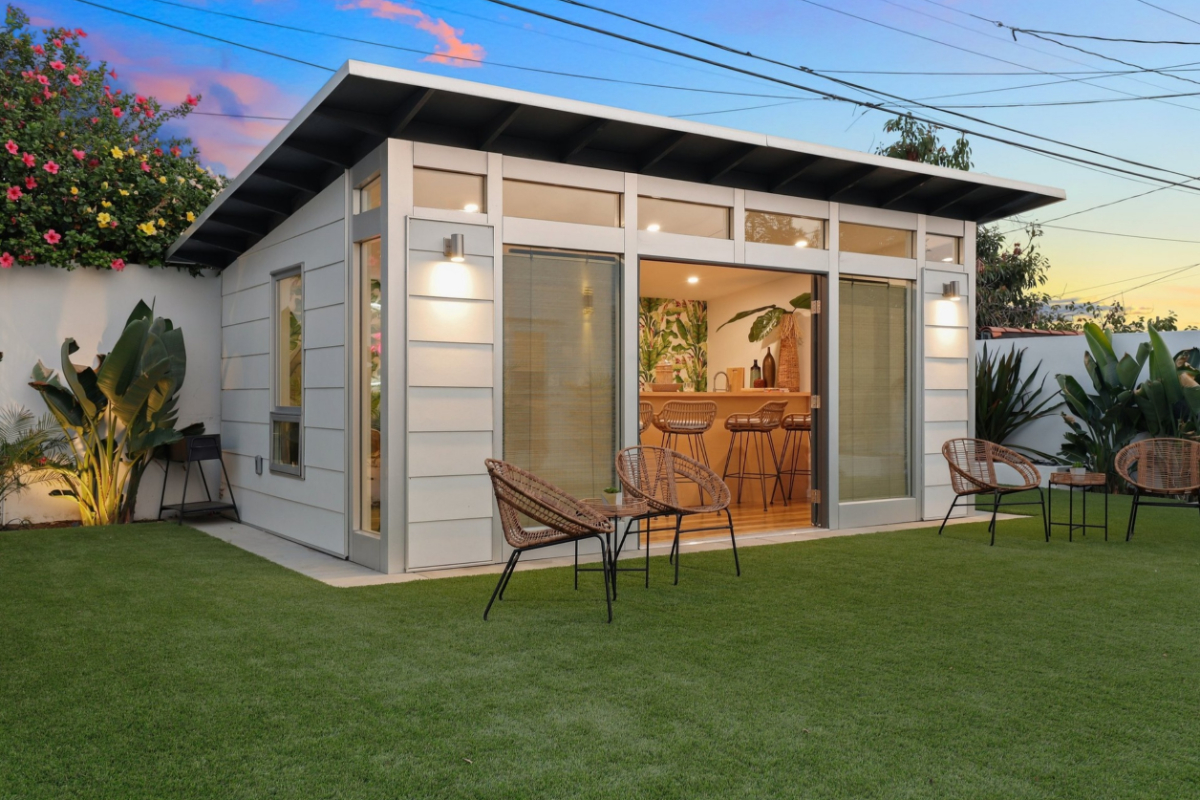
Can temporary flooring lay over carpet?
Temporary flooring can go over carpeting. Before you install it, make sure it can’t cause damage to the underlying floor. The adhesive used for some flooring options – like vinyl plank – can ruin carpeting. Read the reviews and choose a temporary flooring that will leave no trace.
Why choose temporary flooring over carpet?
You may have several reasons to place temporary flooring over the carpet as a renter. If you’re accident-prone, have pets, or have small children who tend to spill. If you put down temporary flooring, you will be able to keep the existing carpet in its move-in condition and ensure you’ll get your security deposit back when you move out.
Temporary flooring offers these advantages:
- Easier to clean: If you’re rental has carpet, adding temporary flooring can make your space easier to clean. Most types of vinyl tile, click-in flooring, and other composites clean up nicely with a solution of dish soap and water. Some carpet tiles have stain-resistant coatings, making them easier to clean. Even in the worst-case scenario with a stubborn stain, all you need to do is remove the one stained piece and replace it with a new one at a fraction of the cost to recarpet a room.
- Holds up well to daily wear and tear: Temporary flooring is durable. Temporary flooring materials can take a beating and hardly show signs of any wear. The colors and patterns of most temporary flooring are designed so that any damage or fading gives it character rather than destroying the overall aesthetic.
- Resistant to common allergens: The synthetic materials used in many temporary flooring options do not create an environment that encourages mold or mildew growth. Unlike regular carpeting, these materials don’t hold on to dust and other indoor allergens. When appropriately cleaned with mild soap and dried, these materials are hypoallergenic.
- Can make a house feel like a home: The addition of temporary flooring allows you to make your apartment or rental property feel like home. Temporary flooring can update the look to fit your personality or lifestyle and create a welcoming, comfortable feel in the space.
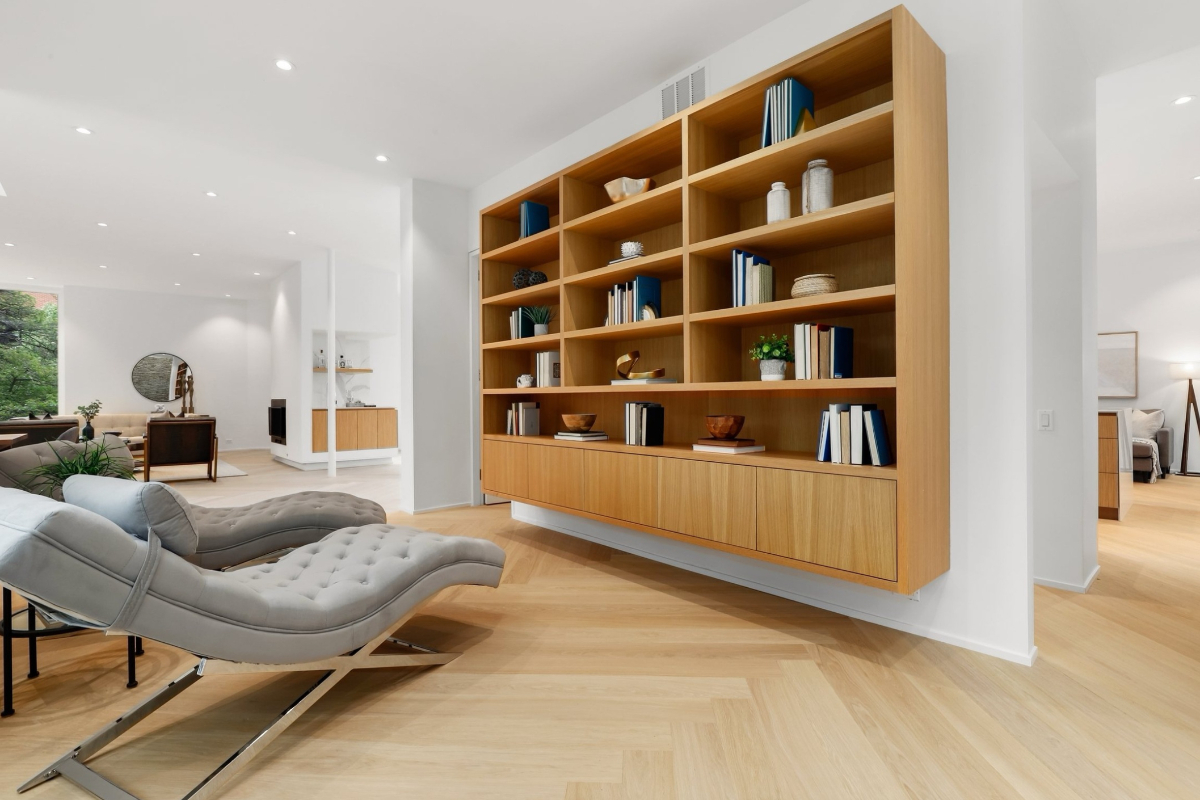
Factors to consider before applying temporary flooring:
Depth of pile on the underlying carpet: In general, a low-pile carpet is a better surface for temporary flooring, a more uniform surface than a carpet with a higher pile. A lower-pile carpet, such as a loop carpet, provides a dense, sturdy surface that works well beneath rigid floor planks or tiles.
A high-pile carpet may be too soft for a rigid tile, plank, or peel-and-stick flooring; the temporary flooring may continually unlock or become unstuck, especially in a high-traffic area. If you have a high pile and still want to use temporary flooring, you may achieve a better result if you place a thin sheet of plywood over the carpet to create a more stable foundation.
Uneven surfaces: With uneven surfaces, you may need to choose a more flexible temporary flooring option, such as foam tile or area rugs, unless you want to lay down plywood to create an even, consistent surface. With plywood in place, you could use any temporary flooring solution that will lay flat.
Cost: Temporary flooring options are very budget-friendly. The cost typically ranges between $8–$20 per square foot for labor and materials to install a floating floor over the existing carpet, depending on your selected temporary flooring.
Material:
- Choose a suitable material for the application. You wouldn’t place interior flooring outside and vice versa.
- Keep humidity in mind.
- If you have high humidity, choose a waterproof flooring option. You may want to consider extra waterproofing or a protective underlayer to prevent accidental damage to the carpet.
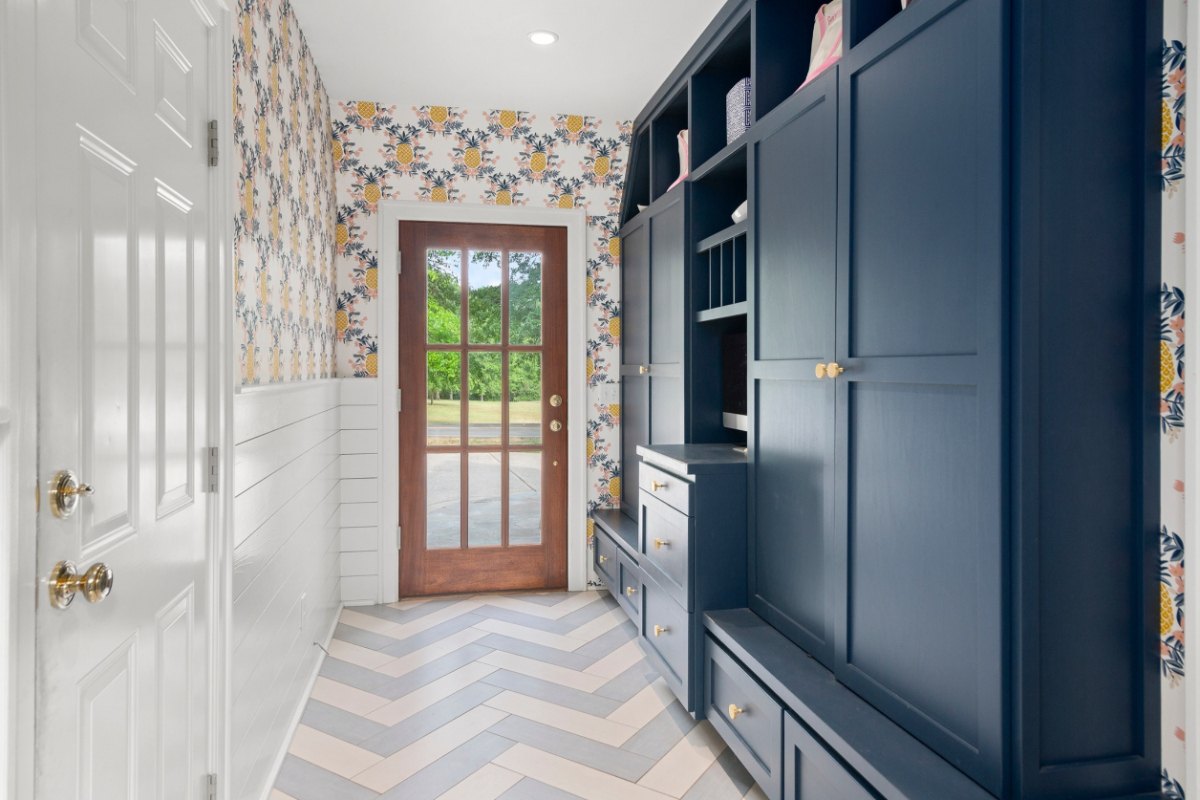
Is temporary flooring right for you? The final say.
While temporary flooring is likely safe to cover most surfaces, your lease may specify that you need permission before making this change. If you ask for permission in advance, many landlords will welcome any temporary change that keeps you happy as a tenant in their property. Cover your bases with a letter or email explaining why you want to cover the carpet and the type of temporary flooring you propose to use and wait for their approval before proceeding.
The post Temporary Flooring Options for Renters: Take a Bland Space to the Next Level appeared first on Redfin | Real Estate Tips for Home Buying, Selling & More.
